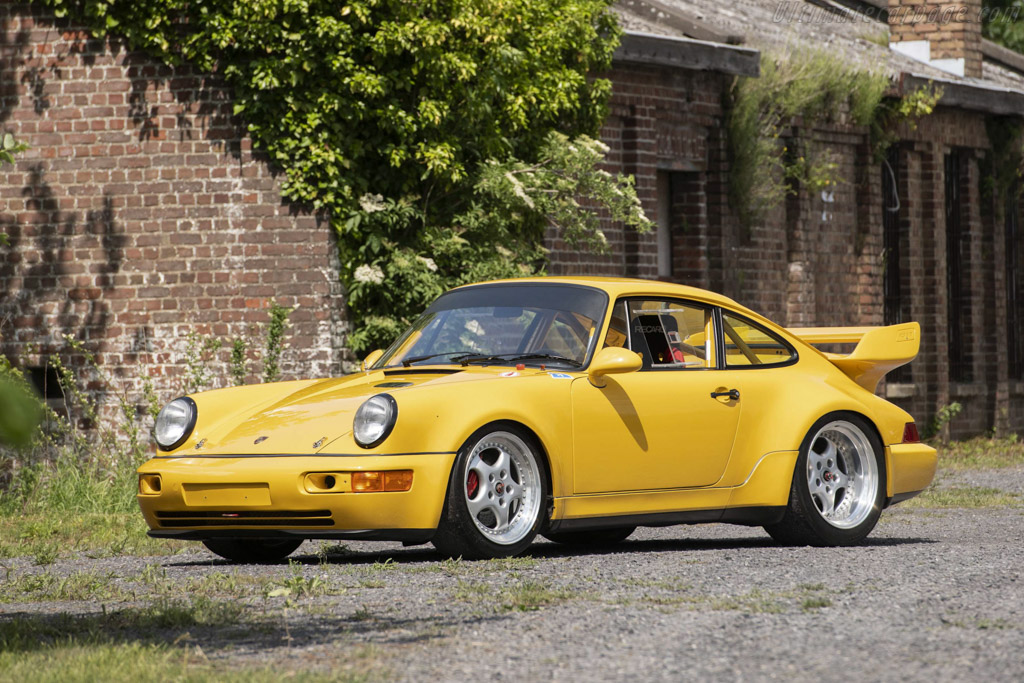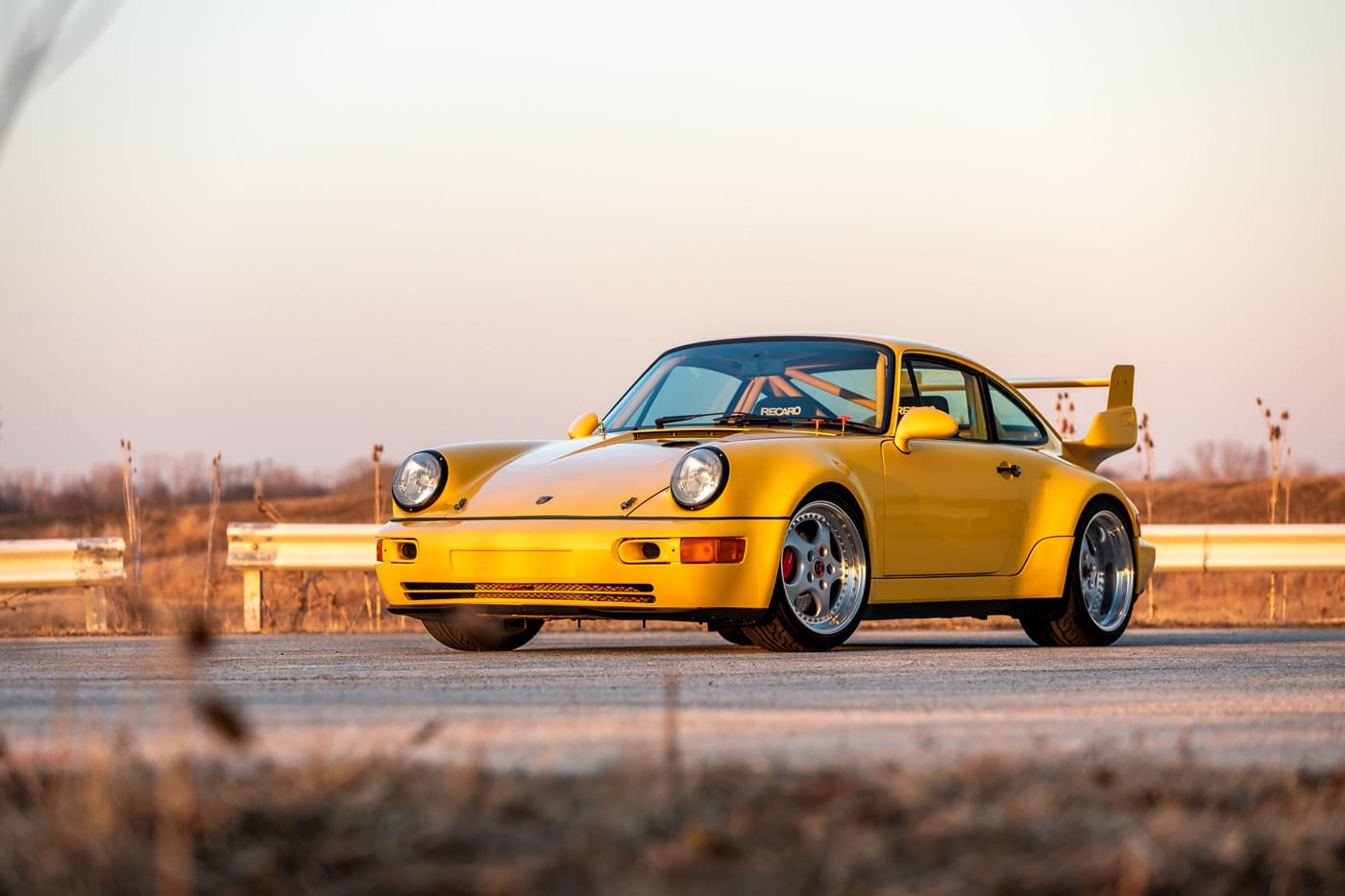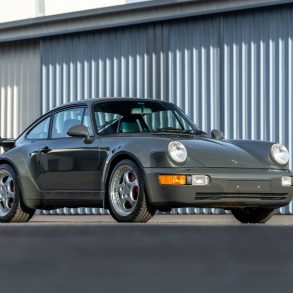(1993) Porsche 911 Carrera RS (964) – Ultimate Guide
The 964 Carrera RS 3.8 was produced as a base for homologation for the venerable 3.8 RSR that went on to claim multiple victories in international competition, including overall wins at the Spa 24 Hours, Suzuka 1000 KM, and 24 Hours of Interlagos as well as class victories at Le Mans, Sebring, and the top four positions in its class at the 24 Hours of Daytona. It was unveiled in 1993 and produced in a very small series by Porsche’s Racing Department in Weissach-Flacht, and was an extreme evolution of the 964 Carrera RS that was released two years prior. It featured the wide-body look of the Type 964 Turbo, a massive rear spoiler, and three-piece “Speedline for Porsche” wheels with 235/40 and 285/35 tires, making it distinctively more aggressive in appearance than the fairly restrained styling of the Carrera RS of 1992 and capable of providing significantly more mechanical grip.
Of course, the Carrera RS 3.8 was not simply a styling package- as was the case with the earlier RS 2.7 and RS 3.0 models, significant attention was paid to weight reduction by incorporating a number of the components from the 964 Cup cars.
The front trunk lid and doors were stamped from aluminum rather than steel as on the production 964, and the glass for the door and rear quarter windows was thinner and lighter. The plush standard carpeting was replaced with thinner and lighter material, the rear seats were deleted, and items that were not directly related to performance such as the power door locks, electric window lifts, and electric multi-adjustable seats were replaced with less weighty manual components. Sound deadening insulation and undercoating were deleted, and the door cards were of the lightweight design as on the RS 2.7 and 3.0, with simple strap pulls and no armrests. Air conditioning was dispensed with and the power steering was replaced with a lighter, non-assisted rack.
The transmission’s gearing was modified to make the most of the optimized power to weight ratio- first, second, and third gears all numerically higher. The synchronizer sleeves were made of a more durable steel, the shift lever was shortened, and a limited-slip differential was made standard. The sum of the modifications over the standard Carrera 2 resulted in a weight savings of approximately 600lbs and a sharp, visceral driving experience.
















